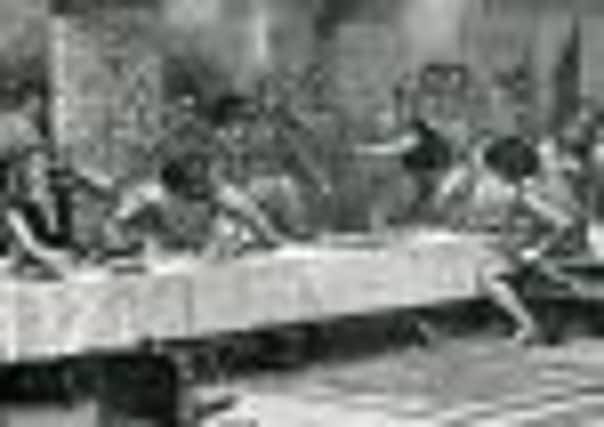Scottish king may be buried under post office


Researchers believe the remains of Edward Balliol, one-time King of the Scots, could be lying under the building in Doncaster town centre.
The news comes days after experts revealed King James I might be resting under a car park in Perth and follows confirmation that remains found under a car park in Leicester are those of England’s Richard III.
Advertisement
Hide AdA group of historians and archaeologists say they are now convinced that Balliol, who ruled from 1332-36, was laid to rest under the South Yorkshire town’s main post office.
After ruling Scotland, Edward, son of John Balliol, is known to have moved to the city, where he died in 1367. There are no burial records and the location of his grave remains unknown but now experts believe there are a number of locations in Doncaster where he could rest, with the post office the most likely spot, reports the Doncaster Free Press newspaper.
Peter Robinson, museums officer in human history at Doncaster Museum, said: “We know Edward Balliol lived here for a while and died here, but the location of where he was buried is uncertain.
“The current post office is built on a huge burial ground and that’s where eminent figures would have been laid to rest. At that time, the area was home to a large Carmelite friary, and that’s one of the places where Edward could be buried.”
Historians are also looking into claims that Doncaster could actually be part of Scotland. The town was seized by the Scots nearly 900 years ago – and they say it may never have officially been handed back.
Records show the town was under Scottish rule for 21 years, from 1136 to 1157.
Advertisement
Hide AdHistorian Michael Brown, Scottish history expert at St Andrews University, said Edward Balliol was an unpopular and obscure monarch.
He said: “He’s not really well known and there hasn’t been a great deal of research about the Balliol family in the past. We know he was ejected from Scotland and spent time living in estates and castles in Yorkshire and the [English] north-east.
Advertisement
Hide Ad“Edward was never fully accepted as the Scottish king and he had to fight hard to be recognised as such. He was very much regarded as a puppet of the English king at the time and we do know he was regarded as a not very popular figure.”
But Mr Brown said Edward was regarded by historians as an “effective and energetic leader”, and is remembered in his later years for breaking into the Queen’s park near Knaresborough, in Yorkshire, where he was caught poaching deer.
The historian said: “He was certainly rough around the edges by all accounts, and spent his retirement in and around the Doncaster area.”
Edward Balliol was the eldest son of John Balliol, erstwhile King of the Scots, and Isabella de Warenne, daughter of the 6th Earl of Surrey, whose family owned Conisbrough Castle in South Yorkshire.
Records say he was born in 1283 and was a long-time pretender to the Scottish throne, from 1314 to 1356, though he ruled for just four years.